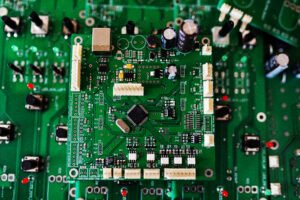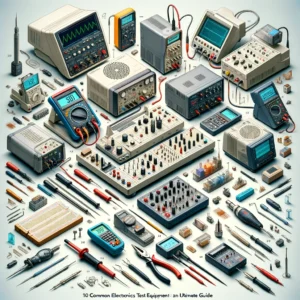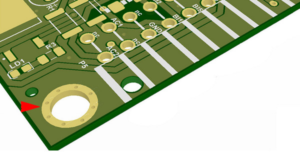What are Mounting Holes?
Understanding Mounting Holes in PCBs
Mounting holes are a fundamental aspect of printed circuit boards (PCBs). They are drilled through the PCB to facilitate mounting the board to a chassis or enclosure. These holes are typically larger than other holes on the PCB and are strategically located, often at the board’s corners or other critical areas. They are crucial for the mechanical stability of the PCB in its final application.
Types of Mounting Holes
There are two primary types of mounting holes in PCBs: plated and un-plated.
- Plated Mounting Holes: These holes have a conductive layer and are used when electrical connections are needed between different PCB layers. For instance, connecting the top layer to a ground plane in multi-layer PCBs requires plated mounting holes. They also provide a robust anchor point for screws and other hardware, ensuring components are securely attached to the board.
- Un-plated Mounting Holes: These are used mainly for mechanical purposes and are isolated from the board’s electrical components and traces. They may require a keep-out zone to prevent interference with the circuit’s functionality.
Try PCB Assembly services at PCBPit today >>
Mounting Holes with Vias
Often, mounting holes are surrounded by tiny vias. These vias serve several purposes:
- Distributing mechanical stress over a larger area, providing additional support to prevent damage from mechanical stress or vibration.
- Creating grounding connections between different PCB layers, which is vital in reducing electromagnetic interference and noise in high-frequency or sensitive circuits.
- Connecting a copper plane or heatsink to the mounting hole for efficient heat dissipation. This direct thermal path allows for effective heat transfer from the PCB to the heatsink.
Importance in PCB Design
Mounting holes play a critical role in PCB design, influencing both the mechanical and electrical integrity of the board. Their placement and type must be carefully considered in the PCB design process to ensure the board’s stability, functionality, and compatibility with its final housing or enclosure.
Try PCB Manufacturing services at PCBPit today >>
Factors to Consider
- Size and Placement: The diameter and location of the mounting holes must accommodate the mechanical requirements of the final product.
- Electrical Connectivity: Plated holes must be designed to ensure proper electrical connections without causing short circuits or interference.
- Thermal Management: In high-power applications, the role of vias around mounting holes in heat dissipation must be considered.
Conclusion
Mounting holes are a vital yet often overlooked aspect of PCB design. They ensure mechanical stability, contribute to the electrical functionality, and aid in thermal management of the PCB. Proper design and implementation of mounting holes are essential for the overall performance and longevity of the PCB in its application.
Share:
More Posts

PCB Ruler: A Comprehensive Guide
PCB Ruler: A Comprehensive Guide What is a PCB Ruler? A PCB ruler is a functional tool made from the same materials as a printed

Thermal Vias: A Comprehensive Guide for PCB Heat Management
Thermal Vias: A Comprehensive Guide for PCB Heat Management Why Heat Management Matters in PCBs Before diving into thermal vias, let’s understand why heat is

PCB Testing Guide: Everything You Need to Know
PCB Testing Guide: Everything You Need to Know This guide will walk you through the essentials of PCB testing, including why it matters, common testing

What Is A Rogers PCB?
What Is A Rogers PCB? If you’ve ever used a smartphone, connected to Wi-Fi, or marveled at satellite communication, you’ve indirectly interacted with a technology



